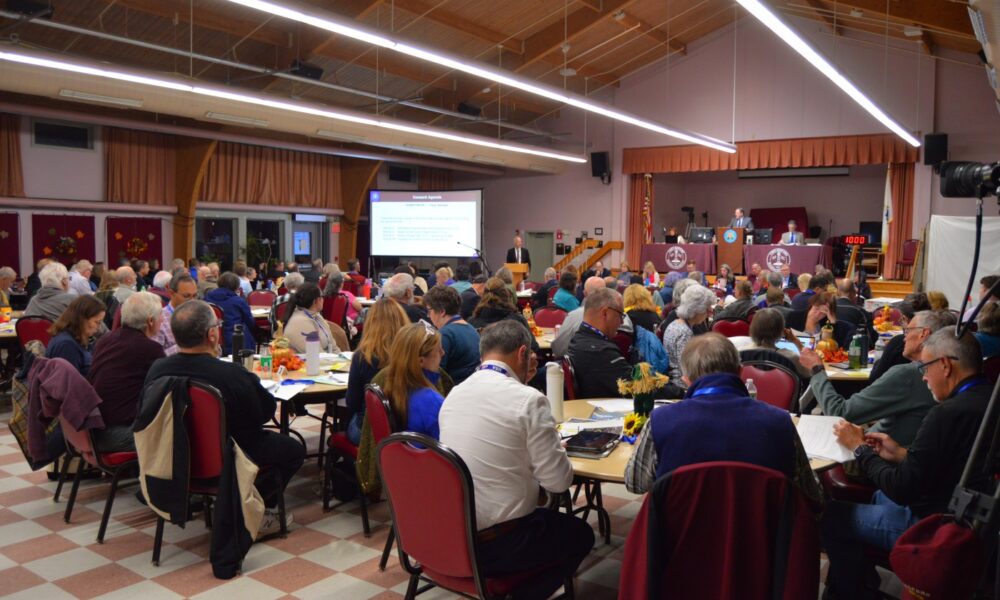UPDATE: The Chelmsford Fall Town Meeting wrapped up Thursday evening with significant zoning and bylaw changes, aimed at reshaping the town’s development landscape. In a decisive vote, Articles related to a new Roadside Commercial Light District (CBLT) passed overwhelmingly, drawing support from town officials and residents alike.
The meeting, which concluded around 8 PM, featured a vital consent agenda comprising 12 articles. Planning Board Chair Chris Lavallee emphasized the importance of bundling these articles to ensure the success of the CBLT zone, designed to bridge residential and light industrial areas, particularly around Kate’s Corner.
“If we approve all 11, and then vote down the 12th, all of that time on the first 11 will have been wasted,” said Lavallee, highlighting the urgency of the vote.
With the consent agenda passing by a vote of 107-3, the new zoning regulations aim to create a buffer between industrial and residential zones, reducing potential impacts on local neighborhoods. This plan includes provisions for ultra-light manufacturing, encompassing activities like 3D printing and specialized electronics manufacturing.
Following this, Article 27 was also approved with 114-1 votes, applying the newly created CBLT zoning to the Kate’s Corner area. Notably, Lavallee reassured attendees that the existing Lockheed Martin facility would remain unaffected by these changes, providing a necessary safeguard for residents.
Town Meeting Representative Glenn Thoren confirmed Lockheed Martin’s stability, stating, “I am very familiar with what is going on at Lockheed right now; they are not going anywhere.” This reassured many concerned residents about the future of their neighborhood.
Article 29, which sought to redefine “family” within the town’s bylaws for compliance with the Fair Housing Act, gained traction after failing in the spring. The new definition broadens the scope to include various living arrangements, passing with a vote of 88-22. Lavallee stated the intent was to align with fair housing standards without changing societal definitions of family.
“We want to make sure we are in compliance with fair housing standards,” Lavallee explained, emphasizing the article’s importance for future planning.
Additionally, Article 30, which removes references to school impacts in special permit considerations, also passed with 86-23 votes. This decision sparked debate, as some representatives expressed concerns about the implications for local schools and infrastructure.
Town attorney John Eichman clarified that legal precedents prevent planning boards from considering school impacts during special permit evaluations, reinforcing the town’s responsibility to manage educational services.
The successful passage of these articles marks a pivotal moment for Chelmsford, reflecting a community-focused approach to development and zoning regulation. Residents and officials alike are hopeful that these changes will foster a balanced environment for both business and residential needs.
As Chelmsford moves forward, all eyes will be on how these new zoning laws will be implemented and their long-term impact on the community. Stay tuned for further updates on this developing story.







